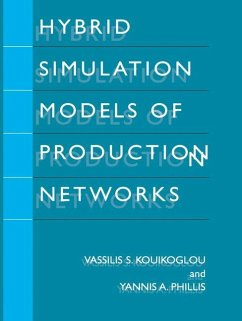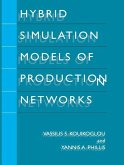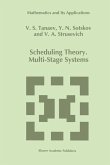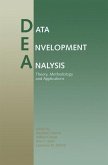This book is concerned with a most important area of industrial production, that of analysis and optimization of production lines and networks using discrete-event models and simulation. The book introduces a novel approach that combines analytic models and discrete-event simulation. Unlike conventional piece-by-piece simulation, this method observes a reduced number of events between which the evolution of the system is tracked analytically. Using this hybrid approach, several models are developed for the analysis of production lines and networks. The hybrid approach combines speed and accuracy for exceptional analysis of most practical situations. A number of optimization problems, involving buffer design, workforce planning, and production control, are solved through the use of hybrid models.
Industrial production is one of the most basic human activities indispensable to the economic activity. Due to its complexity, production is not very well understood and modeled as opposed to traditional fields of inquiry such as physics. This book aims at enhancing rigorous understanding of a particular area of production, that of analysis and optimization of production lines and networks using discrete event models and simulation. To our knowledge, this is the first book treating this subject from the point of view mentioned above. We have arrived at the realization that discrete event models and simulation provide perhaps the best tools to model production lines and networks for a number of reasons. Analysis is precise but demands enormous computational resources, usually unavailable in practical situations. Brute force simulation is also precise but slow when quick decisions are to be made. Approximate analytical models are fast but often unreliable as far as accuracy is concerned. The approach of the book, on the other hand, combines speed and accuracy to an exceptional degree in most practical applications.
Industrial production is one of the most basic human activities indispensable to the economic activity. Due to its complexity, production is not very well understood and modeled as opposed to traditional fields of inquiry such as physics. This book aims at enhancing rigorous understanding of a particular area of production, that of analysis and optimization of production lines and networks using discrete event models and simulation. To our knowledge, this is the first book treating this subject from the point of view mentioned above. We have arrived at the realization that discrete event models and simulation provide perhaps the best tools to model production lines and networks for a number of reasons. Analysis is precise but demands enormous computational resources, usually unavailable in practical situations. Brute force simulation is also precise but slow when quick decisions are to be made. Approximate analytical models are fast but often unreliable as far as accuracy is concerned. The approach of the book, on the other hand, combines speed and accuracy to an exceptional degree in most practical applications.








